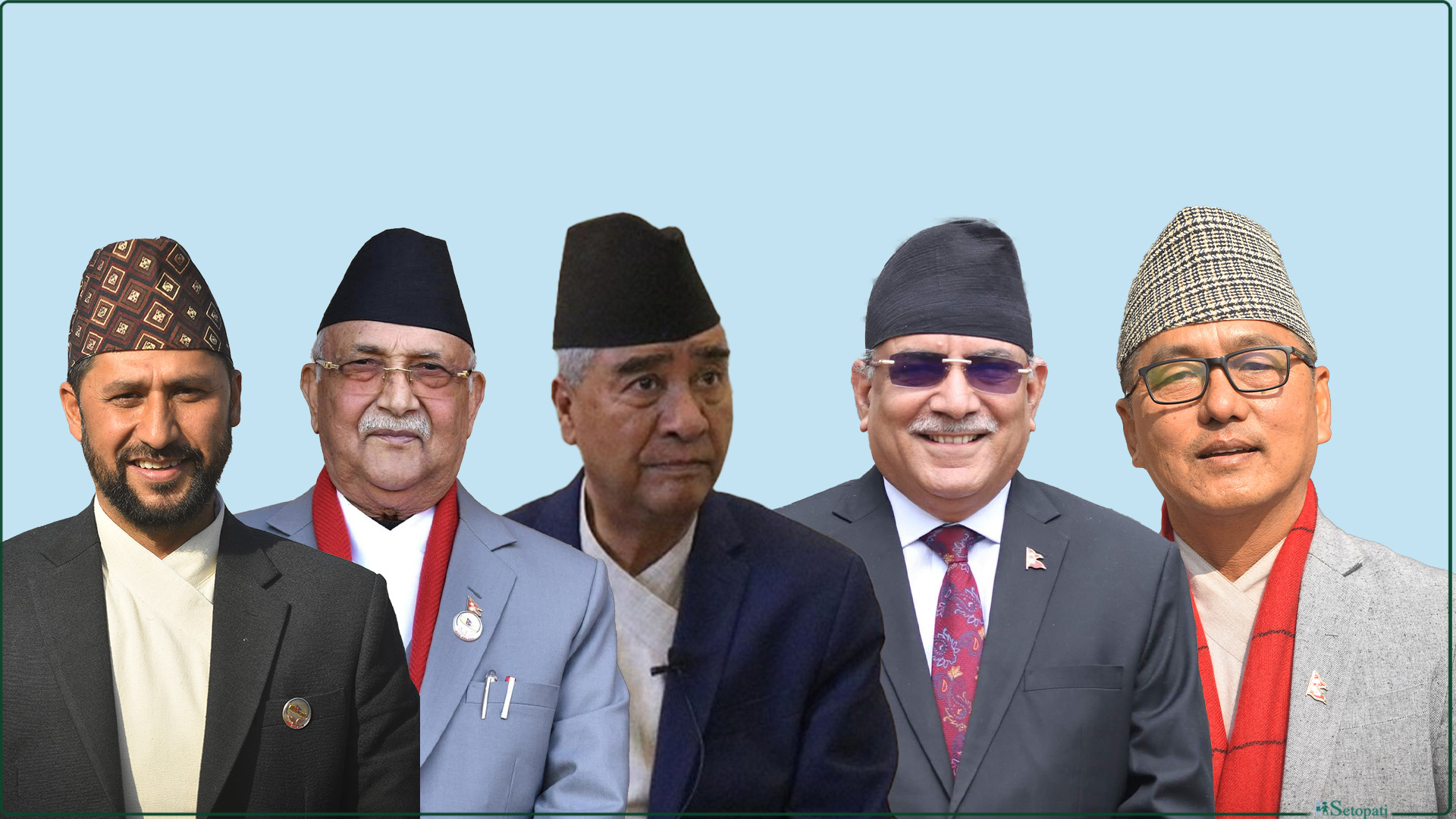CPN-UML would have won the most House of Representatives (HoR) seats in the First-Past-The-Post electoral system in the recent election had each party contested on its own.
Nepali Congress (NC), CPN (Maoist Center), CPN (Unified Socialist), Loktantrik Samajwadi Party (LSP) and Rastriya Janamorcha allied across the country fielding common coalition candidates in almost all the constituencies.
CPN-UML allied with Janata Samajwadi Party (JSP)—that quit the then ruling coalition just before filing nominations over differences on sharing of seats—in the constituencies in the plains while UML and RPP also allied in a few constituencies.
NC won in 57 constituencies, UML in 44, Maoist Center 18, Unified Socialist 10, Rastriya Swatantra Party seven, RPP seven, JSP seven, LSP four, Nagarik Unmukti Party three in the FPTP electoral system.
It is not possible to say how many seats the parties would have exactly won had they contested on their own without forging any alliance. But the Proportional Representation (PR) votes secured by the parties in each constituency provide a rough picture of the votes their candidates would have got in those respective constituencies had they contested on their own.
| |
Party |
|
|
2022 |
|
|
2017 |
|
| Leading in PR Votes |
FPTP Seats Won |
Leading in PR Votes |
FPTP Seats Won |
| CPN-UML |
73 |
44 |
77 |
80 |
| Nepali Congress |
51 |
57 |
53 |
23 |
| Rastriya Swatantra Party |
14 |
7 |
|
|
| CPN (Maoist Center) |
9 |
18 |
11 |
32 |
| Janamat Party |
6 |
1 |
|
|
| JSP (FSFN) |
5 |
7 |
12 |
10 |
| Nagarik Unmukti Party |
3 |
3 |
|
|
| LSP (RJP) |
2 |
4 |
11 |
11 |
| RPP |
1 |
7 |
|
1 |
| Nepal Workers and Peasants Party |
1 |
1 |
1 |
1 |
Individual attraction toward or revulsion of the candidates would definitely have swung votes deciding victories in some closely contested constituencies but the PR votes largely show how the parties would have fared in those constituencies.
UML, that led the PR votes with a total of 2,644,241 votes, led in PR votes in 73 out of the 165 constituencies meaning it would have won 73 seats had all the parties contested on their own. It, however, won only 44 seats in the FPTP system due to the dynamics of coalition.
NC, that actually won in 57 constituencies, would have won in 51 seats without coalition.
Maoist Center and Unified Socialist seem to have gained the most due to the coalition. Maoist Center, that won 18 seats in the FPTP system, would have won only nine seats while Unified Socialist, that won 10, would not have won any seat had all the parties contested on their own.
RPP, that won seven seats due to alliance with UML in three constituencies and individual popularity of some of its candidates including Gyanendra Shahi, would similarly have won only one seat with votes from only its vote-base. RPP leads PR votes only in West Nawalparasi won by former IGP of Nepal Police Dhruba Bahadur Pradhan.
Rastriya Swatantra Party, that won seven seats while contesting for the first time, would have won 14 seats on the basis of PR votes. UML had won in 11 constituencies and NC three in 2017 in these 14 constituencies where Rastriya Swatantra Party leads on PR votes this time.
Another newly formed party Janamat Party would also have benefited had all the parties contested on their own. Chairman CK Raut was the only Janamat candidate to be elected in the FPTP system but it would have won six constituencies had all the parties contested on their own.
Nagarik Unmukti Party, that won three seats, and Nepal Workers and Peasants Party, that won one, would have won the same number of seats even if all the parties had contested on their own.
JSP, that won seven seats, would have won only five seats without coalition while LSP, that won four seats, leads in only two constituencies.

